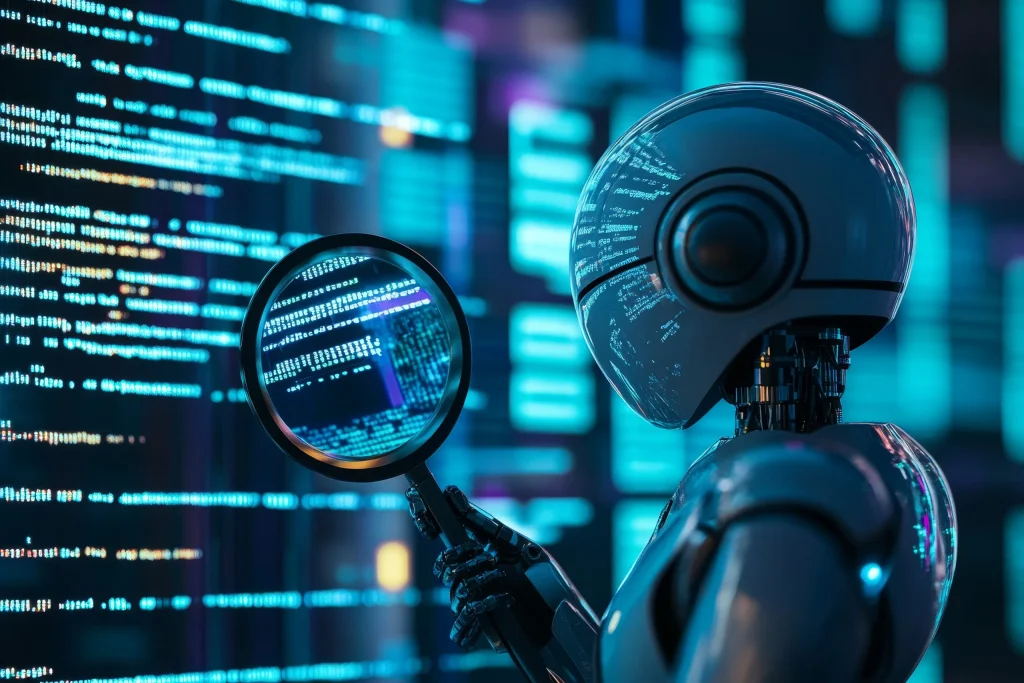Introduction
Within the age of synthetic intelligence (AI), the place machines can generate essays, compose music, and even create sensible pictures, the road between human and machine-created content material is more and more blurred. This evolution has led to a urgent want for instruments that may determine whether or not a given piece of content material was generated by AI. Enter the Detector de IA and the Détecteur IA —superior instruments developed to investigate and decide the origin of digital content material. These detection programs have turn into essential in academia, journalism, enterprise, and cybersecurity.
What’s a Detector de IA or Détecteur IA?
A Detector de IA or Détecteur IA refers to a software program or algorithm particularly designed to determine whether or not a textual content, picture, or media was created by synthetic intelligence. These instruments are programmed utilizing a mixture of pure language processing (NLP), machine studying, and statistical evaluation to detect patterns indicative of AI-generated content material.
The Rise of AI-Generated Conten
The event of AI fashions similar to GPT-3, GPT-4, Claude, and Gemini has revolutionized content material era. From college students utilizing AI for homework to companies using it for advertising copy, the purposes are limitless. Nonetheless, this rise has raised considerations:
- Educational integrity: College students might use AI to cheat.
- Faux information: AI-generated articles might unfold misinformation.
- Plagiarism considerations: Authentic authors might not get due credit score.
- Safety dangers: Deepfake movies and AI-created phishing emails could be deceptive and harmful.
Due to these considerations, the demand for dependable detectors has surged, making instruments like Detector de IA and Détecteur IA extremely priceless.
How Do AI Detectors Work?
1. Language Sample Recognition
AI-generated content material typically has particular traits:
- Repetitive phrasing
- Overuse of sure connectors (e.g., “Furthermore”, “Due to this fact”)
- Lack of deep contextual understanding
- Excellent grammar (mockingly, a crimson flag)
AI detectors analyze these patterns and examine them to identified samples of human and AI writing.
2. Perplexity and Burstiness
Two key statistical ideas used are:
- Perplexity: Measures how predictable a textual content is. AI tends to supply low-perplexity content material.
- Burstiness: Refers back to the variability in sentence size and construction.
3. Dataset Comparability
Some detectors examine the enter textual content in opposition to huge datasets of identified AI-generated content material. If matches or similarities are discovered, the device flags the content material.
4. Machine Studying Fashions
Superior detectors use pre-trained AI fashions educated to differentiate between AI and human writing.
Fashionable Detector de IA and Détecteur IA Tools
A number of platforms provide strong detection companies. Some well-known ones embody:
1. OpenAI AI Classifier
One of many early instruments developed by OpenAI, it classifies textual content into a number of classes like “not possible AI” to “seemingly AI”.
2. ZeroGPT
Accessible in a number of languages, together with Spanish and French, ZeroGPT gives a percentage-based probability of AI-generated content material.
3. Copyleaks
Gives a multi-language AI content material detector that’s particularly well-liked in training and enterprise settings.
4. GPTZero
Developed for academic use, GPTZero is extensively utilized by lecturers to test pupil submissions for AI involvement.
5. Correcteur IA
Particularly utilized in French-speaking areas, this Détecteur IA is tailor-made for educational and journalistic use.
Purposes of Detector de IA and Détecteur IA
1. Schooling
Educators use these instruments to uphold educational integrity.
2. Publishing and Journalism
In an period of deepfakes and faux information, verifying the authenticity of articles is essential. Information businesses use AI detectors to keep up credibility.
3. Enterprise and Advertising and marketing
Corporations guarantee their advertising content material is authentic and not plagiarized from AI outputs. This additionally helps in search engine marketing, as search engines like google and yahoo might penalize AI-written content material.
4. Authorities and Authorized
AI detectors are getting used to validate official paperwork, courtroom testimonies, and public communications to forestall misinformation or unauthorized content material.
Moral Concerns
Regardless of their usefulness, Detector de IA and Détecteur IA instruments increase some moral questions:
1. False Positives
A detector might wrongly flag human-written content material as AI-generated, resulting in unfair penalties or accusations.
2. Privateness Considerations
Some instruments retailer the content material submitted for evaluation, elevating information safety points.
3. Overreliance
Extreme dependence on detectors might create a hostile surroundings, particularly in training, the place real pupil work may be questioned.
4. AI vs. Human Collaboration
How ought to such content material be categorised? Detectors might wrestle in these gray areas.
Challenges and Limitations
Even essentially the most superior Detector de IA or Détecteur IA will not be good. Listed below are a number of limitations:
- Evasion methods: Expert customers can edit AI content material barely to bypass detection.
- Evolving AI fashions: As AI will get smarter, it mimics human patterns higher, making detection tougher.
- Multilingual detection gaps: Some detectors carry out higher in English than in different languages like Spanish or French.
Way forward for AI Detection
As AI continues to evolve, so too should the instruments designed to detect it. The longer term holds promise in a number of areas:
1. Blockchain Verification
Utilizing blockchain to confirm content material origin might turn into commonplace observe, permitting clear monitoring of authorship.
2. Watermarking AI Content material
Builders are experimenting with invisible watermarks embedded into AI-generated textual content, making it simpler to detect at scale.
3. Hybrid Detectors
Future instruments might mix textual content evaluation, semantic understanding, and contextual metadata to enhance accuracy.
4. Cross-language Help
Enhanced multilingual fashions will enable for correct detection throughout numerous languages and dialects.
Conclusion
The Detector de IA and Détecteur IA have turn into indispensable instruments in our more and more AI-influenced digital world. As content material era by machines grows, so does the necessity for correct, moral, and clear methods to distinguish between human and AI-created content material.
Try new and newest article to see by clicking here.




